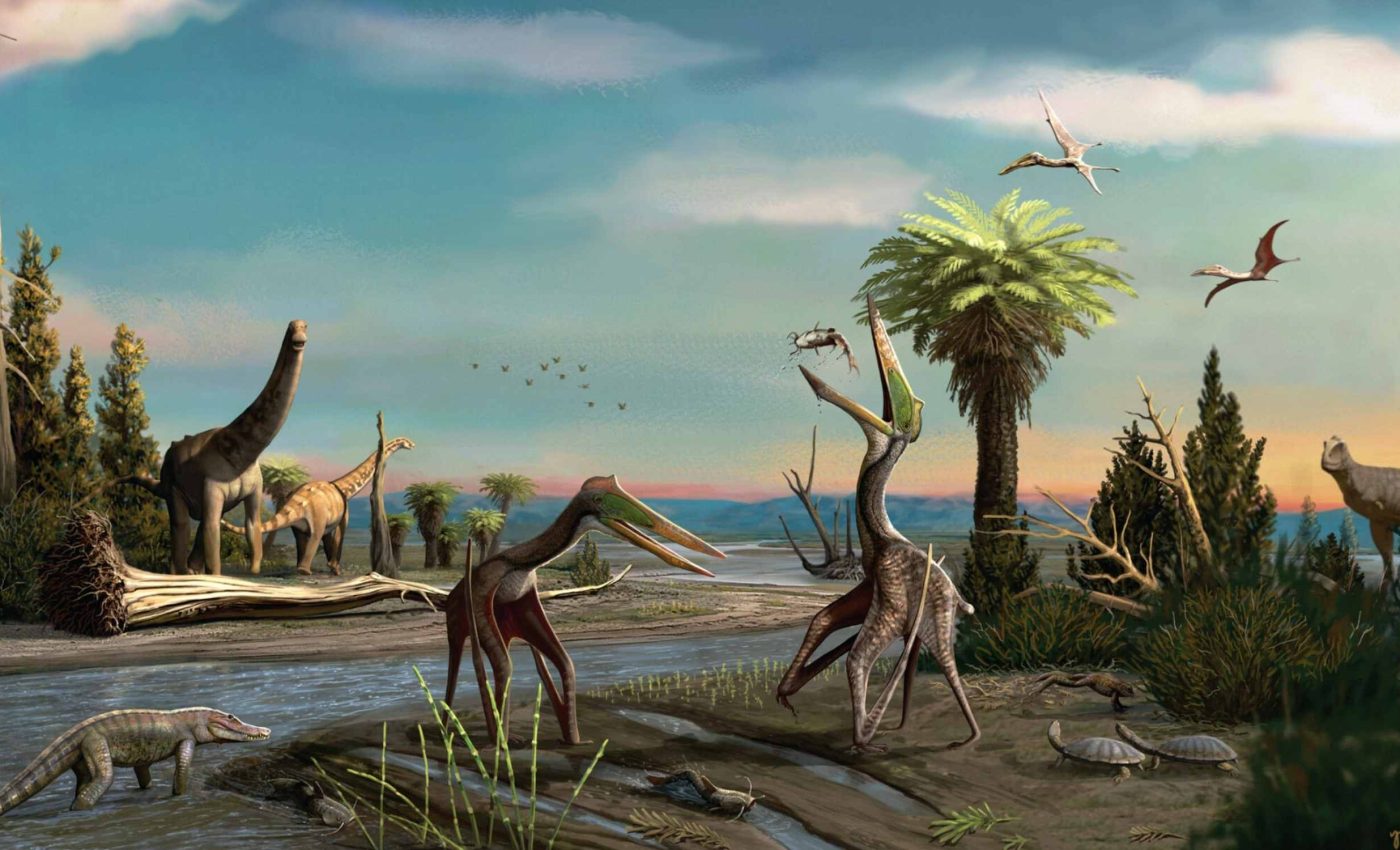
New pterosaur species discovered that expands their range beyond what scientists believed
A palm-sized jaw tip from north of Uberaba, Minas Gerais, has been identified as a new species of pterosaur, Galgadraco zephyrius. The paper reports the first confirmed Brazilian azhdarchid and links it to a Romanian cousin.
The animal lived near the end of the Cretaceous, between 70 and 67 million years ago. It likely spanned about 13 to 16 feet (4 to 5 meters) across the wings.
Thus, it is considered a medium-to-large-sized azhdarchid, which is a pterosaur family with long necks and no teeth.
Studying Galgadraco zephyrius
The work was led by Ariovaldo A. Giaretta, a paleontologist at the Federal University of Uberlândia. His research focuses on South American Mesozoic vertebrates.
The fossil is the front tip of the upper jaw, the rostrum. Its cross section is V-shaped and the biting edges are low and rounded.
Furthermore, on the palate run paired rows of occlusal foramina, which are tiny slits that carried nerves and blood vessels. Their density is high near the tip, a detail that matches a Transylvanian species named Albadraco tharmisensis.
The authors also report a shallow, midline palatal groove that is unique within the group. That distinctive feature helps separate the Brazilian form from similar animals in other regions.
Why Galgadraco zephyrius matters
Until now, the Bauru Group’s Upper Cretaceous rocks were rich in dinosaurs and crocodyliforms but poor in pterosaur bones. This find closes a conspicuous gap in that record.
The Serra da Galga Formation formed a distributive fluvial system – a fan-shaped river network that spreads sediment outward.
That setting helps explain why fragile pterosaur remains are rare here, and why most pterosaur finds come from other Brazilian basin systems.
Taphonomic evidence suggests that azhdarchids mainly lived in inland environments, but preservation and sampling biases can often obscure species that once existed in those ecosystems.
Here, taphonomic evidence of how organisms become fossils and are preserved, is central to that pattern. The mix of channel sands and soil horizons at the site adds to that story.
Finding both adult sized bones and a very small lower jaw fragment at the same level hints at life stages sharing the same landscape. It suggests nearby nesting grounds, though the team labels that idea cautious.
A pterosaur cousin across the Atlantic
The match to the Romanian Albadraco suggests traffic between landmasses that looked very different then. Europe and South America show pterosaurs with notably similar jaws near the close of the Cretaceous.
Researchers used phylogenetic analysis, which is a trait-based test of evolutionary relationships. They compared hundreds of skeletal features across many pterosaurs to build a family tree.
Once that context is in place, size falls into focus. Galgadraco appears mid-sized for the group, based on jaw proportions and comparisons within closely related taxa.
Quetzalcoatlus, which is known for its immense wingspan, stands as the largest flying creature ever discovered and remains one of the most recognizable pterosaurs.
Where the rock came from
The fossil was recovered at the Serra da Galga Geosite, about 15.5 miles north of Uberaba in Minas Gerais. The site sits within the Uberaba UNESCO Global Geopark, a protected area known for a rich fossil record.
In this part of Brazil, rivers built broad sand bodies under a hot, dry climate. Maastrichtian, the last slice of the Cretaceous, 72 to 66 million years ago, frames this story.
The bone itself shows only minor wear, which suggests limited transport before burial. Details like that help show the fossil did not travel far from where the animal lived.
Close by, the same layer holds fish, crocodyliforms, and titanosaurs, a typical late Cretaceous continental mix in this basin. A mix like that gives a fuller picture of the ecosystem.
Lessons from Galgadraco zephyrius
The team reports tiny jaw material from a very young pterosaur at the same level as the adult jaw. That pairing is unusual in continental deposits of this age.
If more of the skeleton turns up, behavior and diet will be easier to assess. A unique palatal groove, a shallow channel along the roof of the mouth, may even hint at how the jaws met during feeding.
More targeted sieving at the site could yield additional small bones and teeth from the same layer. That shift in collection strategy often changes how we see a fauna.
For now, the new name sits on a single but telling piece of skull. That small fragment opens a new chapter in Brazil’s record of flying reptiles.
The study is published in Papers in Palaeontology.
—–
Like what you read? Subscribe to our newsletter for engaging articles, exclusive content, and the latest updates.
Check us out on EarthSnap, a free app brought to you by Eric Ralls and Earth.com.
—–













